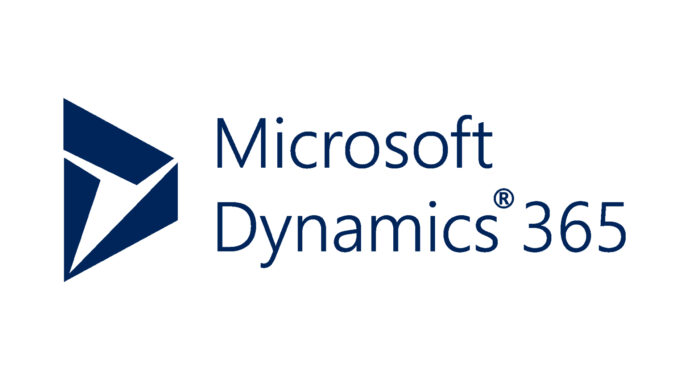
Effective enterprise resource planning (ERP) systems all have a few things in common. They feature simple user interfaces, easy integrations with other software programs, actionable data analysis and reports, and customizable modules that meet the customer’s demands. However, that doesn’t mean all a company has to do is choose the first ERP software vendor with a decent reputation.
Getting access to the right ERP system requires some work. Decision-makers will need to make lists of potential vendors, then actively compare different ERP systems to see which one best fits the business’s unique needs. Read on to find out how to do that.

Narrowing Down the Competition
There are hundreds of ERP systems out there, and no team of business leaders has the time to investigate each of them independently. That’s why the first step should always be to narrow down the competition to vendors that supply products tailored to the company’s needs. People generally look for the following.
Industry-Specific Experience
ERP originated in manufacturing, but now, most solutions are designed with a much wider array of potential businesses in mind. Don’t consider every generalized ERP solution out of the running, especially if there aren’t many specialized software programs from vendors that have good reputations, but find out whether other companies in the industry use the systems and, if so, how they feel about them.
Good Value for the Money

Thankfully, there are ERP solutions at almost every price point. However, a higher cost doesn’t always equal quality. Set a specific budget, but be sure that systems chosen for the short list provide not just a bargain but good value for the money.
Established reputations
There are some areas of life and business where it’s okay to give a new company a chance. ERP is not one of them. Since the company’s entire workflow will depend on the ERP system, narrow down the list to providers that have been around for long enough to establish reputations for themselves in the industry.
Compare Products Directly
Once those tasked with making the choice have narrowed down the list to a handful of ERP solutions, they should take the time to compare them directly. There are resources available online that combine information from different sources to offer feature-by-feature comparisons, and they are incredibly useful in further narrowing down the list of potential solutions.
Reach Out to Vendors
After learning as much as possible about the different products available and narrowing down the list of potential ERP solutions to no more than a few systems, it’s time to reach out to vendors. This requires submitting requests for proposals (RFPs) directly and reviewing them carefully, at which point it should become clear what product is the best fit for the particular application.
Submitting RFPs should be relatively simple if decision-makers have done their homework. They should know by this step in the process not just what general features to look for but also exactly how they might fit with the company’s core business activities and needs. If any confusion arises during the process, don’t be afraid to reach out to a consultant for guidance.
Pros and cons of each ERP system

ERP systems are an important tool for businesses of all sizes and industries, helping to streamline operations, increase efficiency, and improve decision-making. However, with so many ERP systems available in the market, it can be challenging to choose the one that best fits your business’s needs. In this section, we will discuss the pros and cons of popular ERP systems.
SAP
- According to technologyevaluation.com, SAP is one of the most popular ERP systems, offering a range of modules for different business processes. The main benefits of SAP include its scalability, extensive customization options, and advanced analytics capabilities. However, SAP can be complex and costly to implement, and its user interface is not always intuitive.
Oracle
- Oracle ERP is another popular choice, known for its flexibility and integration capabilities. It offers a range of modules for finance, human resources, supply chain, and other business processes. The main benefits of Oracle include its scalability, customizable workflows, and strong security features. However, Oracle can be expensive to implement and maintain, and its user interface can be difficult to navigate.
Microsoft Dynamics

- Microsoft Dynamics is a cloud-based ERP system that offers a range of modules for finance, supply chain, and customer relationship management. It is known for its user-friendly interface and easy integration with other Microsoft products. The main benefits of Microsoft Dynamics include its ease of use, affordability, and customizable workflows. However, it may not be as scalable as other ERP systems and may not offer advanced analytics capabilities.
NetSuite
- NetSuite is a cloud-based ERP system that offers a range of modules for financial management, e-commerce, inventory management, and more. It is known for its flexibility and scalability, as well as its strong reporting and analytics capabilities. The main benefits of NetSuite include its ease of use, scalability, and strong integration capabilities. However, NetSuite can be expensive, and its customization options may be limited.
Infor
- Infor is a cloud-based ERP system that offers a range of modules for finance, human resources, and supply chain management. It is known for its user-friendly interface, powerful analytics capabilities, and strong customization options. The main benefits of Infor include its ease of use, scalability, and strong analytics capabilities. However, it may not offer as many modules as other ERP systems, and its support services may be limited.
Case studies
Case studies are a valuable tool for businesses looking to understand how ERP systems work in real-world scenarios. In this section, we will explore case studies of companies that have implemented different ERP systems, highlighting the benefits and challenges they faced during implementation and use.
Nike

- Nike, a global sports brand, implemented SAP ERP to improve its supply chain management processes. The system allowed Nike to streamline its operations, reduce lead times, and improve inventory management. However, the implementation process was complex and required significant investment, and the system was not always user-friendly.
Toyota
- Toyota, a global automotive company, implemented Oracle ERP to streamline its financial management processes. The system helped Toyota to consolidate financial data from different regions and improve decision-making. However, the implementation process was time-consuming and required significant customization, and the system was not always user-friendly.
The Real Real
- The RealReal, a luxury consignment retailer, implemented NetSuite ERP to improve its inventory management and financial reporting processes. The system allowed The RealReal to automate processes and gain real-time visibility into its operations. However, the implementation process was challenging, and the system required significant customization to meet the company’s needs.
What Happens Now?
Choosing the right ERP vendor makes the final steps easy. The vendor will provide all the help required to get the system up and running and employees trained to use it. Companies that put in the work to find the right ERP solution can expect to start seeing results almost immediately.





